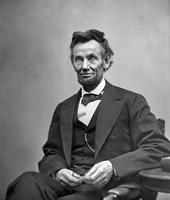
Figure 1 – The last formal photograph of Abraham Lincoln taken on February 5, 1865 by Alexander Gardner. From the US LOC and in the public domain.
Today is April 15th. Yesterday I posted two images taken on April 14th – the second was on April 14t, 1865. This is a black day in American history because on April 15, 1865 – a day after the second image President Abraham Lincoln was assassinated by John Wilkes Booth of the then famous Booth family of actors. He died at 7.22 on the morning of April 15, 1865.
So my pictures of today were both taken by Alexander Gardener, one of the great Civil War photographers, and a rival of Mathew Brady. Figure 1 shows Gardner’s “Last formal picture of Abraham Lincoln” and was taken on February 5, 1865. Figure to is Gardner’s portrait of the famous (now infamous) actor John Wilkes Booth taken on an unknown date also in 1865.
The two images in a sense represent polar extremes – extremes of political thought certainly. The camera in a way fails us. It does not allow us to really see, and only to speculate in retrospect with knowledge of who the sitters were, into the tormented souls of these two men – Lincoln tormented by the heavy responsibility for so man deaths and Booth tormented by the lost cause of his beloved South.
Lincoln, as we know, had a premonition of his own death. It was as if his worldly task was to save the Union and with that accomplished the fates discarded him.

Figure 2 – John Wilkes Booth Figure 1 – The last formal photograph of Abraham Lincoln taken in 1865 by Alexander Gardner. From the US LOC and in the public domain.
“About 10 days ago, I retired very late. I had been up waiting for
important dispatches from the front. I could not have been long in bed
when I fell into a slumber, for I was weary. I soon began to dream.
There seemed to be a death-like stillness about me. Then I heard subdued
sobs, as if a number of people were weeping. I thought I left my bed
and wandered downstairs. There the silence was broken by the same
pitiful sobbing, but the mourners were invisible. I went from room to
room; no living person was in sight, but the same mournful sounds of
distress met me as I passed along. I saw light in all the rooms; every
object was familiar to me; but where were all the people who were
grieving as if their hearts would break? I was puzzled and alarmed. What
could be the meaning of all this? Determined to find the cause of a
state of things so mysterious and so shocking, I kept on until I arrived
at the East Room, which I entered. There I met with a sickening surprise. Before me was a catafalque, on which rested a corpse wrapped in funeral vestments. Around it were stationed soldiers who were acting as guards; and there was a throng of people, gazing mournfully upon the corpse, whose face was covered,
others weeping pitifully. ‘Who is dead in the White House?’ I demanded
of one of the soldiers, ‘The President,’ was his answer; ‘he was killed
by an assassin.’ Then came a loud burst of grief from the crowd, which
woke me from my dream. I slept no more that night; and although it was
only a dream, I have been strangely annoyed by it ever since.[12]
